Seven Questions Over Breakfast with Craig Frazier
 June 9th, 2011 by jules
June 9th, 2011 by jules
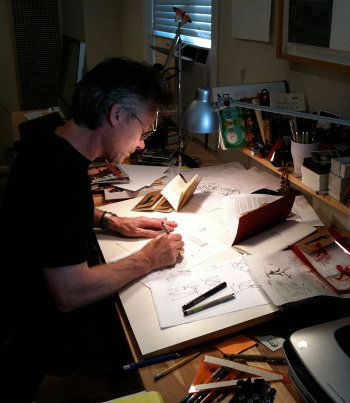 “For eighteen years, Craig Frazier worked as a graphic designer, producing trademarks, brochures, annual reports, packaging, posters, and advertising. He had bustling offices in the San Francisco Design Center, a staff of six, a client list which included companies like Apple, Herman Miller, Nestle, Steelcase, LucasArts, Oracle, and Kia Motors. His award-winning work was regularly featured in the best design magazines…and is held in the permanent collection of the San Francisco Museum of Modern Art.
“For eighteen years, Craig Frazier worked as a graphic designer, producing trademarks, brochures, annual reports, packaging, posters, and advertising. He had bustling offices in the San Francisco Design Center, a staff of six, a client list which included companies like Apple, Herman Miller, Nestle, Steelcase, LucasArts, Oracle, and Kia Motors. His award-winning work was regularly featured in the best design magazines…and is held in the permanent collection of the San Francisco Museum of Modern Art.
And then, five years ago, Frazier threw it all away.”
That’s the beginning of this compelling article by Kirk Citron for a 2002 issue of Graphis. Citron goes on to write:
The remarkable thing about Craig Frazier is that at the peak of his professional career, he chose to start anew. Without any guarantees, without any steady source of income – and with a wife and two children at home depending on him – he decided to follow his heart.
 Frazier’s transition from graphic design to illustration has served quite well those of us who enjoy his children’s books. Noting that he felt graphic design was “anonymous,” he made the move to illustration, telling Citron he “couldn’t find the Craig” in the design work he was doing. Now, he is … well, showing us the Craig in his work, clearly bringing his designer’s eye and palette and graphic sensibilities to the task with his high-intensity, bold illustrations in his (mostly) wordless titles. In his latest title (lots of art is pictured below), he uses—as I noted over at my Kirkus column in April—rich, unflinching hues and elemental shapes to depict the travels of a bird and a bee, showing the youngest of readers that perspective alone can alter the very definition of a landscape.
Frazier’s transition from graphic design to illustration has served quite well those of us who enjoy his children’s books. Noting that he felt graphic design was “anonymous,” he made the move to illustration, telling Citron he “couldn’t find the Craig” in the design work he was doing. Now, he is … well, showing us the Craig in his work, clearly bringing his designer’s eye and palette and graphic sensibilities to the task with his high-intensity, bold illustrations in his (mostly) wordless titles. In his latest title (lots of art is pictured below), he uses—as I noted over at my Kirkus column in April—rich, unflinching hues and elemental shapes to depict the travels of a bird and a bee, showing the youngest of readers that perspective alone can alter the very definition of a landscape.
And Craig is not only illustrating children’s books. His clients also include corporations, such as the US Postal Service (his 2006 Love Stamp is pictured below in this interview), as well as The New York Times, Time, The Wall Street Journal, and much more.
I highly recommend reading all of Citron’s aforementioned article, as well as visiting Craig’s many cyber-spots on the Web (noted below), but for now Craig joins me for buttermilk pancakes, and I’ll focus a bit more on his children’s books. Let’s get the basics from him while the coffee brews. I thank him for stopping by.
Jules: Are you an illustrator or author/illustrator?
Craig: Illustrator all the time; author, most.
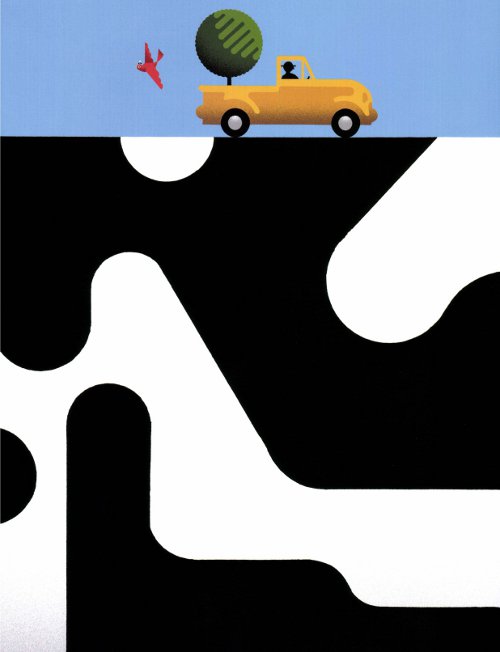

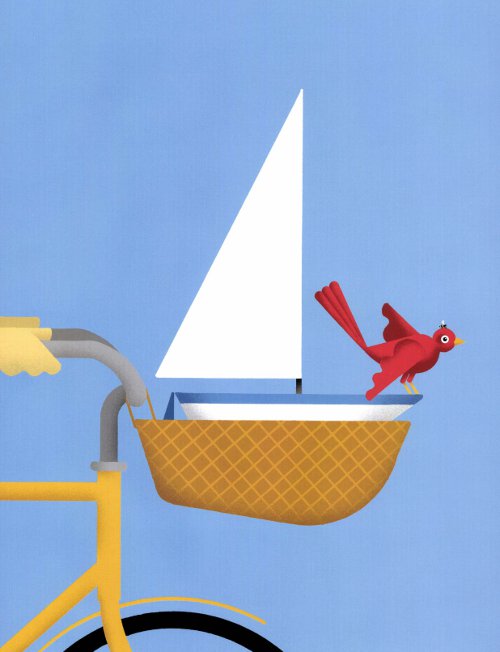

 Jules: Can you list your books-to-date?
Jules: Can you list your books-to-date?
Craig: The Illustrated Voice (Graphis Press, 2003); Stanley Goes for a Drive, Stanley Mows the Lawn, Stanley Goes Fishing (Chronicle Books, 2004-2008); Hank Finds Inspiration (Roaring Brook, 2008); {George Ella Lyon’s} Trucks Roll! (Simon & Schuster, March 2007); {Tom Corwin’s} Mr. Fooster Traveling on a Whim (Doubleday, July 2008), Lots of Dots (Chronicle Books, 2010); Bee & Bird (Roaring Brook, 2011)
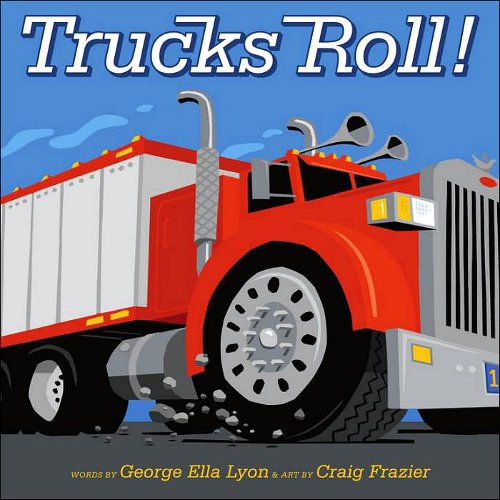
Jules: What is your usual medium, or––if you use a variety—your preferred one?
Craig: My commercial illustration and many of my books are created using cut amberlith and colorized on the computer. In 2009, I illustrated an adult novel with fifty pen and ink drawings, Mr. Fooster Traveling on a Whim. Bee & Bird is a combination of simple ink line drawings that are colored on the computer.
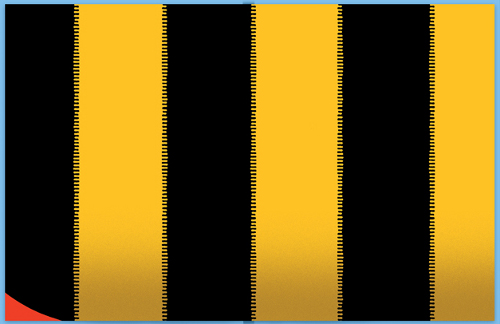

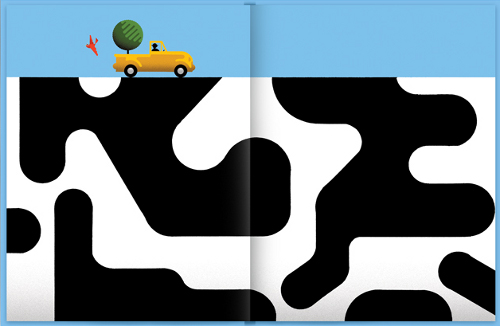
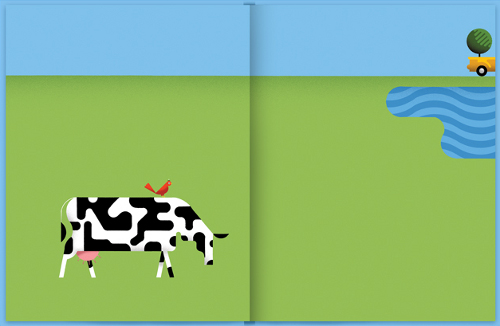

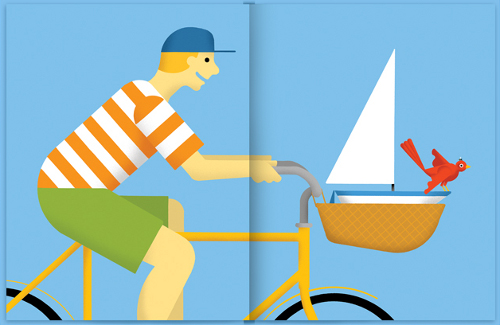

Jules: If you have illustrated for various age ranges (such as, both picture books and early reader books OR, say, picture books and chapter books), can you briefly discuss the differences, if any, in illustrating for one age group to another?
Craig: I never think about the age I am illustrating or writing for. At some point, it comes up with my editor, and we make sure that the language is consistent. I’m not particularly concerned with it. I leave it up to the publisher and the parent to decide who my books are for.
Jules: Where are your stompin’ grounds?
Craig: Mill Valley, California. Just north of the Golden Gate Bridge.
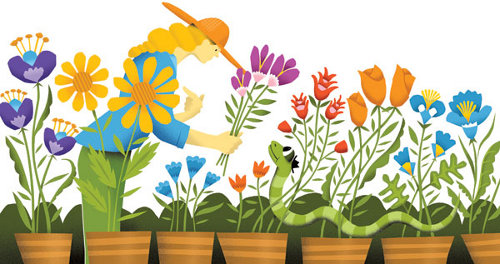
Jules: Can you briefly tell me about your road to publication?
Craig: I have been a designer for 33 years and a full-time illustrator for the last fifteen. About ten years ago, I did my first animation that I eventually turned into my first book, Stanley Goes for a Drive {pictured below}, which was published in a three-book series with Chronicle Books. I have been doing a book or so every year since.
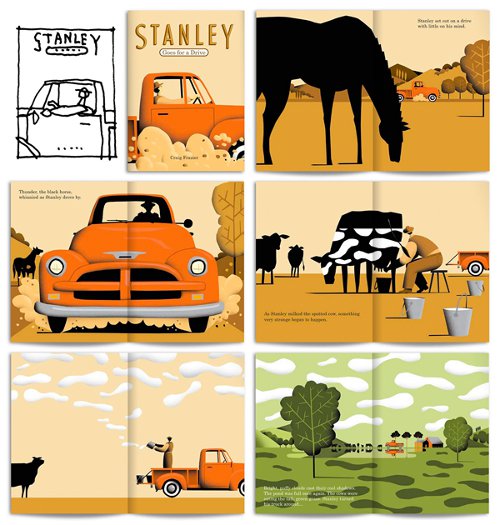
Jules: Can you please point readers to your web site and/or blog?
Craig: 36pages.com; www.craigfrazier.com; www.98pages.com.
Jules: If you do school visits, tell me what they’re like.
Craig: Little curious kids that can’t sit still.
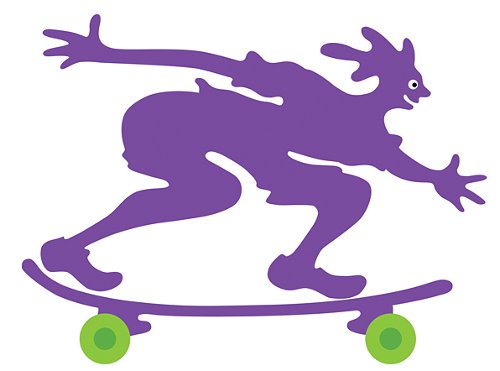
Jules: Any new titles/projects you might be working on now that you can tell me about?
Craig: Putting the finishing touches on a book about a boy who is incredibly curious about food and another about rhyming conundrums. Also, another animal alphabet book based on the font “Critter” that I designed for Adobe in 1992.

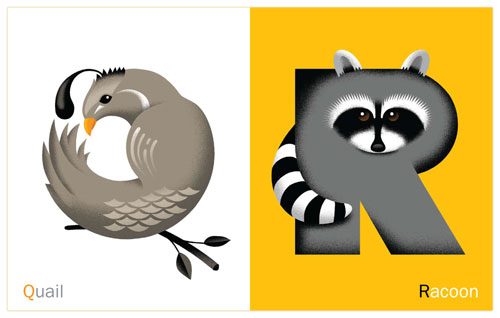
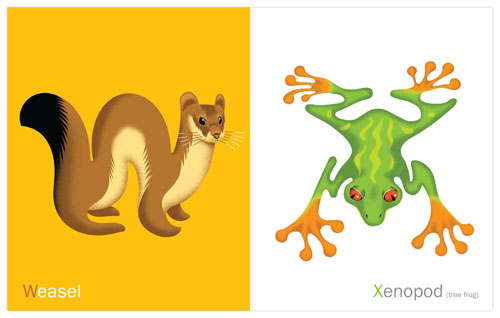
 Coffee’s ready, and the table’s set now for six questions over breakfast. Let’s get a bit more detailed, and I thank Craig again for visiting 7-Imp.
Coffee’s ready, and the table’s set now for six questions over breakfast. Let’s get a bit more detailed, and I thank Craig again for visiting 7-Imp.
1. Jules: What exactly is your process when you are illustrating a book? You can start wherever you’d like when answering: getting initial ideas, starting to illustrate, or even what it’s like under deadline, etc. Do you outline a great deal of the book before you illustrate or just let your muse lead you on and see where you end up?
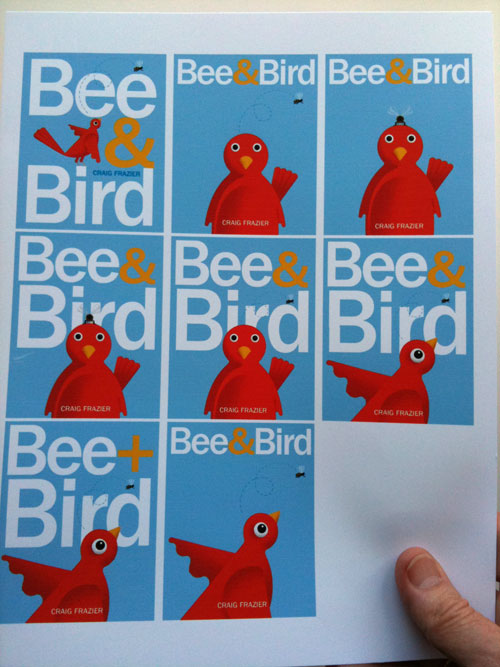
Craig: I start a book in any number of places. The Stanley books were all thematic in that Stanley gets a big idea at some point in the book. They were a matter of setting up and resolving that theme.
Some books, like Lots of Dots, come from a purely visual place and start in my sketchbook. I needed to initially mine enough visuals to fill out the book, then the rhyme-writing takes place.
Most of my books are well-developed when I find a publisher. The story is written, and sample illustrations and a storyboard are presented. Bee and Bird was yet a different scenario, as I had already done one book with my publisher, Neal Porter of Roaring Brook, and I had another as part of our contract. We have a good working rapport that usually takes place over the phone, over coffee, or preferably over cocktails. Neal points, and I sketch. He initiated this book with “how about something really bold and graphic, really different?” Following remarks were, like, “no, no, not that, any other ideas?” Eventually, I roughed out a storyline that we both felt was strong.
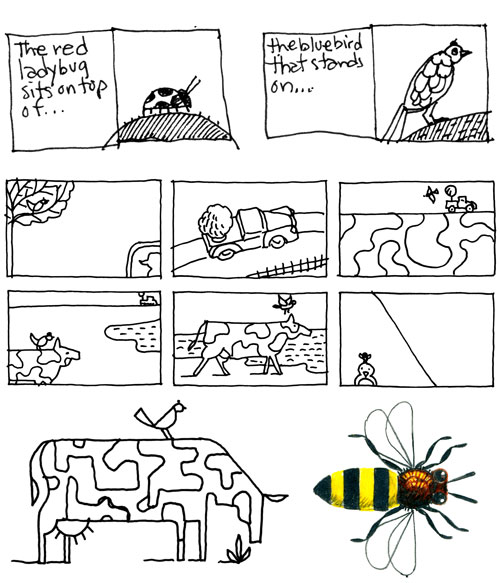
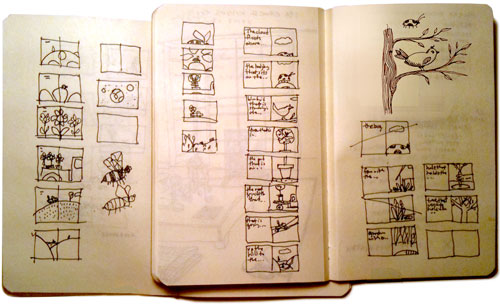
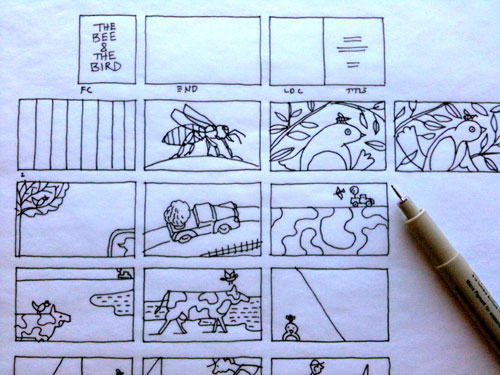

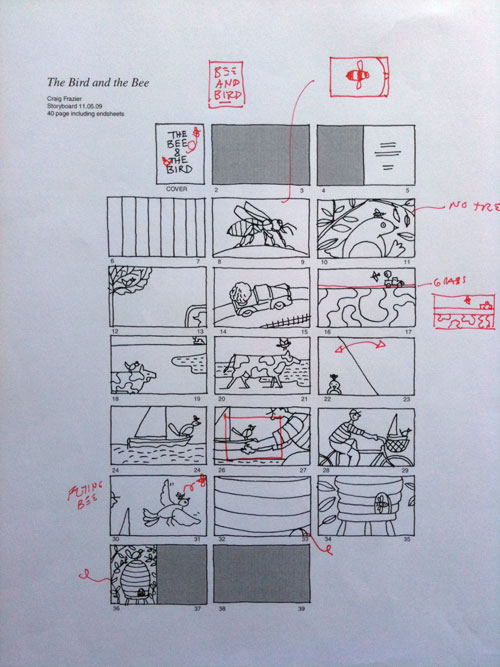
At this stage, I am just doing very small thumbnail storyboards — less concerned with the actual drawing and more the story. We decided very early that this book would be all about the visual surprise of turning the page and that the illustrations would be very simple — graphic and always hint to the next landscape. I happen to love super simple visuals, perhaps a throwback to my early years as a designer when Swiss design was in style. These illustrations are reduced to the fewest elements and created very graphically with straight lines and sensual radiused corners — almost architectural. Perhaps a reaction to the computer, they were all drawn with drafting tools and scanned retaining the pen’s fuzzy edge and colored with primary colors. Each spread changes the viewer’s point of view as well as scale. My hope is that the mystery of each form prompts personal storytelling by the kids (or parents), depending on what they happen to see.
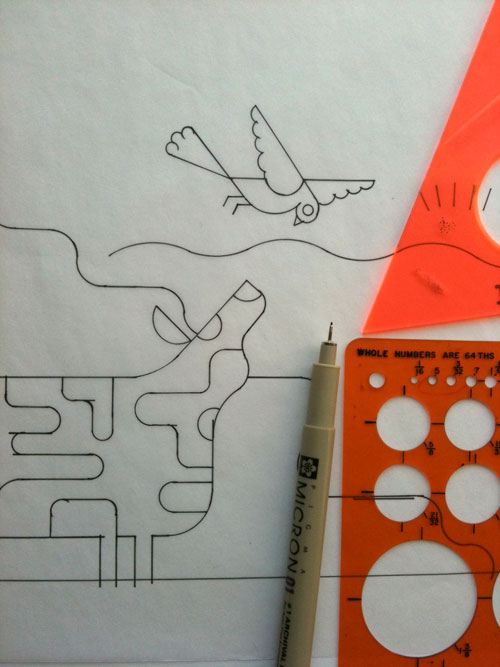
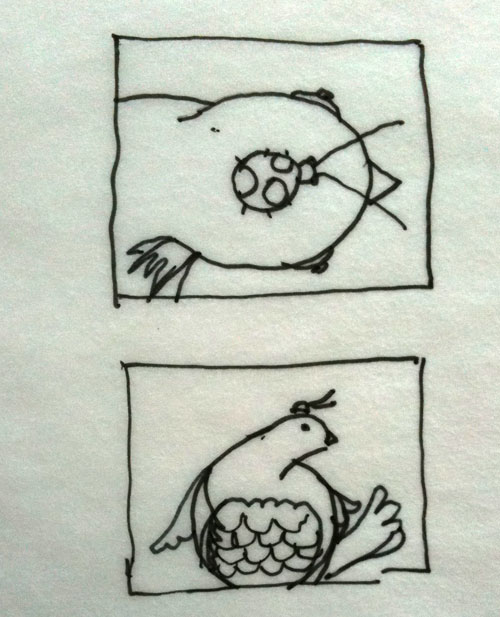
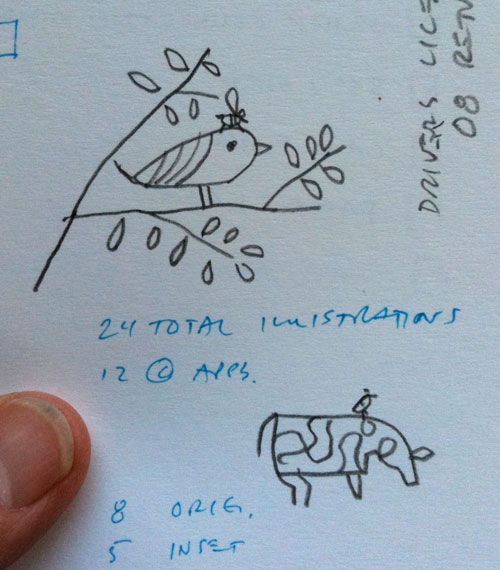
This also points to our decision to make it a wordless book. It is a challenge I give myself, even with written books: “Does this story hold up solely on the merits of the illustrations?” The actual illustrating took several months and lots of re-draws until all the illustrations were consistently drawn in the same vocabulary.
I have learned from my years as a designer to trust the sense of scale and proportion that I work out in my thumbnails. It’s always the same, whether designing a poster or a postage stamp. I suppose that is why I sketch so small and in such small sketchbooks.

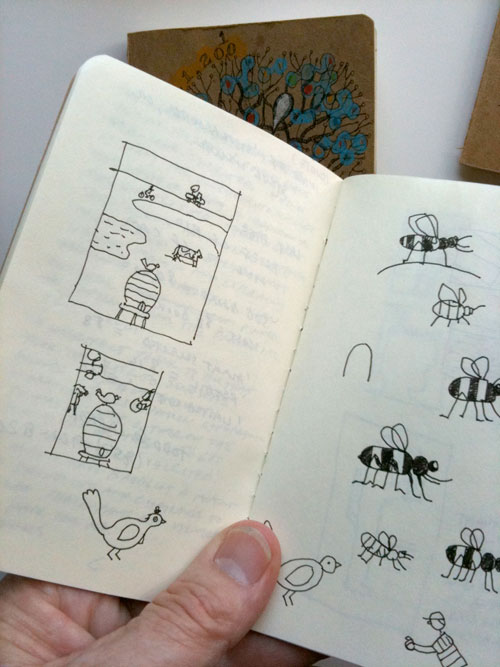


2. Jules: Describe your studio or usual work space.
Craig: I have a 900-square-foot studio in downtown Mill Valley, surrounded by the Depot bookstore and three coffee shops, three restaurants, a market, a florist and a beer pub. It is a true downtown, where we all know each other and hold regular sidewalk conversations.
I work upstairs in a 1906 building with a drawing table, computer, several flat files and various tables to spread things out on. I am surrounded by my favorite books and posters. My assistant of nearly twenty years has her own room in the studio separate from me, though we can shout to one another. My commute is about six minutes from my house. It’s a lovely place to live and work.

3. Jules: As a book lover, it interests me: What books or authors and/or illustrators influenced you as an early reader?
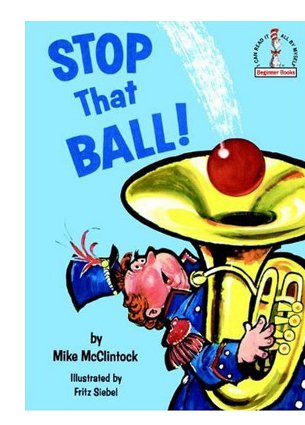 Craig: I only remember a few books from my childhood: The Three Billy Goats Gruff, Goodnight Moon, The Cat in the Hat, and, of course, Stop That Ball! I remember more the books I read my kids: The Very Hungry Caterpillar and any others by Eric Carle, Swimmy by Leo Lionni, Oh, the Places You’ll Go!, Bugs in a Box, Where the Wild Things Are, Cloudy with a Chance of Meatballs, and Tuesday come to mind.
Craig: I only remember a few books from my childhood: The Three Billy Goats Gruff, Goodnight Moon, The Cat in the Hat, and, of course, Stop That Ball! I remember more the books I read my kids: The Very Hungry Caterpillar and any others by Eric Carle, Swimmy by Leo Lionni, Oh, the Places You’ll Go!, Bugs in a Box, Where the Wild Things Are, Cloudy with a Chance of Meatballs, and Tuesday come to mind.
4. Jules: If you could have three (living) illustrators—whom you have not yet met—over for coffee or a glass of rich, red wine, whom would you choose?
Craig: Leo Lionni, Alan Cober, and I would like to have another drink with the very alive Christoph Niemann!
5. Jules: What is currently in rotation on your iPod or loaded in your CD player? Do you listen to music while you create books?
Craig: I just discovered Jon Redfern; love all Dylan, especially Time Out of Mind—great drawing tunes; Van Morrison; Elvis Costello; Bruce; and the latest Paul Simon.
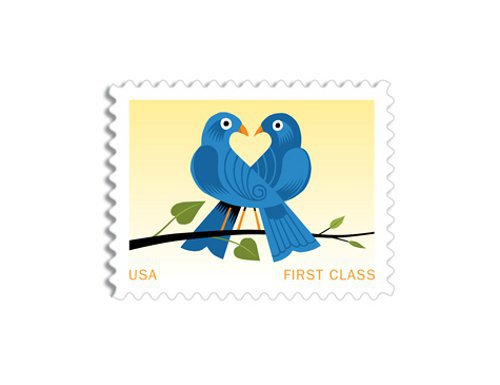
see page 3 of the “Studies” pages at his site for the story)
6. Jules: What’s one thing that most people don’t know about you?
Craig: I can stand on my hands and ride a unicyle.


Jules: What is your favorite word?
Craig: “Sweetie.”
Jules: What is your least favorite word?
Craig: “Fault.”
Jules: What turns you on creatively, spiritually or emotionally?
Craig: Reckless enthusiasm.
Jules: What turns you off?
Craig: Arrogance.
Jules: What is your favorite curse word? (optional)
Craig: “Dang.”
Jules: What sound or noise do you love?
Craig: Birds awakening.
Jules: What sound or noise do you hate?
Craig: Truck mufflers.
Jules: What profession other than your own would you like to attempt?
Craig: Ad copywriter.
Jules: What profession would you not like to do?
Craig: Pediatric surgeon.
Jules: If Heaven exists, what would you like to hear God say when you arrive at the Pearly Gates?
Craig: “Sorry. We don’t have WiFi.”
All artwork and images used with permission of Craig Frazier. All rights reserved.
BEE & BIRD. Copyright © by 2011 by Craig Frazier. Some spreads reproduced by permission of the publisher, Roaring Brook Press, New York, and others reproduced with permission of Frazier.
LOTS OF DOTS. Copyright © by 2010 by Craig Frazier. Spreads reproduced by permission of the publisher, Chronicle Books, San Francisco.
The spiffy and slightly sinister gentleman introducing the Pivot Questionnaire is Alfred, © 2009 Matt Phelan. Thanks to Matt, Alfred now lives permanently at 7-Imp and is always waiting to throw the Pivot Questionnaire at folks.

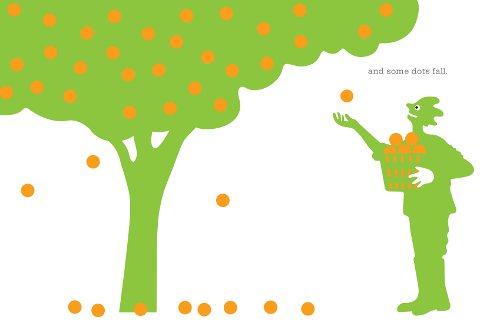
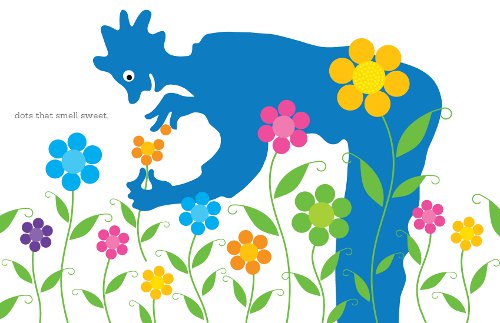
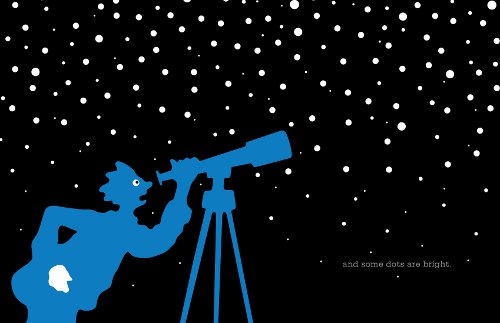
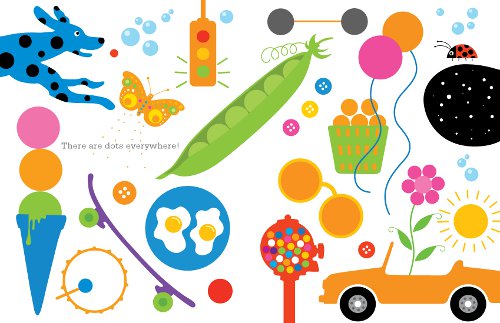

Such a cool style — thanks for sharing. As always, I love the in-progress stuff, and discussion of process…awesome!
This interview, with this extraordinary man, is totally delightful—both because of the interviewee and the inventive and crisply engaging manner of presentation of the questions, and answers.
If I were asked who I admire for the work/play he consistently produces, it would be Craig Frazier, right up in the top arena of special people.
Jeremy, yes. Cool is the word, indeed.
Maynard, why thanks for the compliment. But 99.99999% (plus some) of the sheer awesomeness of this interview is all due to Craig and his work.
[…] and see what author/illustrator and designer Craig Frazier is doing. Last June (2011, that is), he visited 7-Imp—his Pearly-Gates Pivot response is still one of my favorites—and shared lots of […]
[…] — 98pages, a website showing 98 of Mr Frazier’s beautiful sketches; — an interview with Craig Frazier (he mentions Christoph Niemann too); — video via @Issue Journal, The […]